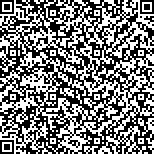| Quote
: |
武玉琳,王翠菡,崔亚萌,王东浩.老年高血压患者中医痰证血流动力学特征[J].湖南中医药大学学报英文版,2023,43(12):2341-2346.[Click to copy
] |
|
| |
|
|
| This paper
:Browser 2043times Download 1152times |
| 老年高血压患者中医痰证血流动力学特征 |
| 武玉琳,王翠菡,崔亚萌,王东浩 |
| (天津医科大学肿瘤医院, 国家恶性肿瘤临床医学研究中心, 天津 300060;天津市恶性肿瘤临床医学研究中心, 天津 300060;天津市肿瘤防治重点实验室, 天津 300060;天津市中西医结合医院·南开医院, 天津 300102) |
| 摘要: |
| 目的 探讨老年高血压患者中医痰证血流动力学特征。方法 入选2022年4月至2023年3月于天津医科大学肿瘤医院住院的老年高血压患者261例;选择同期体检中心老年体检人群58例为对照组。专业医务人员按照规范化操作对入选研究对象行无创血流动力学检测。计算高血压患者中医痰证证候学积分,积分≥4分者为痰证高血压组,积分<4分者为非痰证高血压组。分析各组间中医痰证血流动力学特征。结果 (1)高血压组体质量、体质量指数、动态动脉硬化指数(ambulatory arterial stiffness index,AASI)、空腹血糖(fasting blood-glucose,FBG)、外周血管阻力(systemic vascular resistance,SVR)、外周血管阻力指数(systemic vascular resistance index,SVRI)、舒张末期容积(end diastolic volume,EDV)明显高于对照组(P<0.05);高血压组高密度脂蛋白胆固醇(high density lipoprotein cholesterol,HDL-c)、心脏指数(cardiac index,CI)低于对照组(P<0.05)。(2)痰证高血压组占高血压总体患者的52.49%,且痰证高血压组同非痰证高血压组在性别、体质量指数、AASI、总胆固醇(total cholesterol,TC)、甘油三酯(triglycerides,TG)、低密度脂蛋白胆固醇(low density lipoprotein cholesterol,LDL-c)、FBG的分布上差异有统计学意义(P<0.05),在心搏量指数(systolic volume index,SVI)、心脏指数(cardiac index,CI)、舒张早期功能比(early diastolic function ratio,EDFR)、左心做功指数(left cardiac work index,LCWI)、SVR、SVRI差异均无统计学意义(P>0.05)。(3)弦脉高血压组的AASI、SVR均明显高于滑脉高血压组(P<0.05)。结论 老年高血压患者的血流动力学特征为SVR、SVRI、EDV升高,痰证高血压组较非痰证高血压组在无创血流动力学指标上尚未发现差异,弦脉高血压组的SVR较滑脉高血压组更大。 |
| 关键词: 老年 高血压 无创血流动力学 中医痰证 外周血管阻力 弦脉 |
| DOI:10.3969/j.issn.1674-070X.2023.12.030 |
| Received:May 17, 2023 |
| 基金项目:天津市医学重点学科(专科)建设项目(TJYXZDXK-009A);天津医科大学肿瘤医院肿瘤转化医学种子基金(1910)。 |
|
| Hemodynamic characteristics of TCM phlegm pattern in elderly hypertensive patients |
| WU Yulin,WANG Cuihan,CUI Yameng,WANG Donghao |
| (National Clinical Research Center for Cancer, Tianjin Medical University Cancer Institute & Hospital, Tianjin 300060, China;Tianjin Clinical Research Center for Cancer, Tianjin 300060, China;Tianjin Key Laboratory of Cancer Prevention and Treatment, Tianjin 300060, China;Tianjin Hospital of ITCWM Nankai Hospital, Tianjin 300102, China) |
| Abstract: |
| Objective To explore the hemodynamic characteristics of TCM phlegm pattern in elderly hypertensive patients.Methods A total of 261 elderly hypertensive patients who were hospitalized in Tianjin Medical University Cancer Institute & Hospital from April 2022 to March 2023 were selected as the hy pertension group, and 58 elderly individuals who underwent physical examinations during the same period at the health examination center were selected as the control group. Professional medical personnel performed non-invasive hemodynamic tests on the selected research subjects in accordance with standardized procedures. The scores of TCM phlegm pattern in hypertensive patients were calculated, with a score of ≥ 4 indicating the phlegm pattern hypertension group, and a score of <4 indicating the non-phlegm pattern hypertension group. The hemodynamic characteristics of TCM phlegm pattern were analyzed among the groups. Results(1) The body mass, body mass index, ambulatory arterial stiffness index(AASI), fasting blood glucose(FBG), systemic vascular resistance(SVR), systemic vascular resistance index(SVRI), and end diastolic volume(EDV) in the hypertension group were significantly higher than those in the control group(P<0.05). The high density lipoprotein cholesterol(HDL-c) and cardiac index(CI) in the hypertension group were lower than those in the control group(P<0.05).(2) The patients in phlegm pattern hypertension group accounted for 52.49% of the total hypertension patients, and there was statistical significance in the distribution of gender, body mass index, AASI, total cholesterol(TC), triglycerides(TG), low density lipoprotein cholesterol(LDL-c), and FBG between the phlegm pattern hypertension group and the non-phlegm pattern hypertension group(P<0.05), while there was no statistical significance in systolic volume index(SVI), cardiac index(CI), early diastolic function ratio(EDFR), left cardiac work index(LCWI), SVR, and SVRI(P>0.05).(3) The AASI and SVR of the wiry pulse hypertension group were significantly higher than those of the slippery pulse hypertension group(P<0.05).Conclusion The hemodynamic characteristics of elderly hypertensive patients showed elevated SVR, SVRI, and EDV. No difference was found in non-invasive hemodynamic indicators between the phlegm pattern hypertension group and the non-phlegm pattern hypertension group, and the SVR of the wiry pulse hypertension group was higher than that of the slippery pulse hypertension group. |
| Key words: agedness hypertension non-invasive hemodynamics TCM phlegm pattern systemic vascular resistance wiry pulse |
|

二维码(扫一下试试看!) |
|
|
|
|


